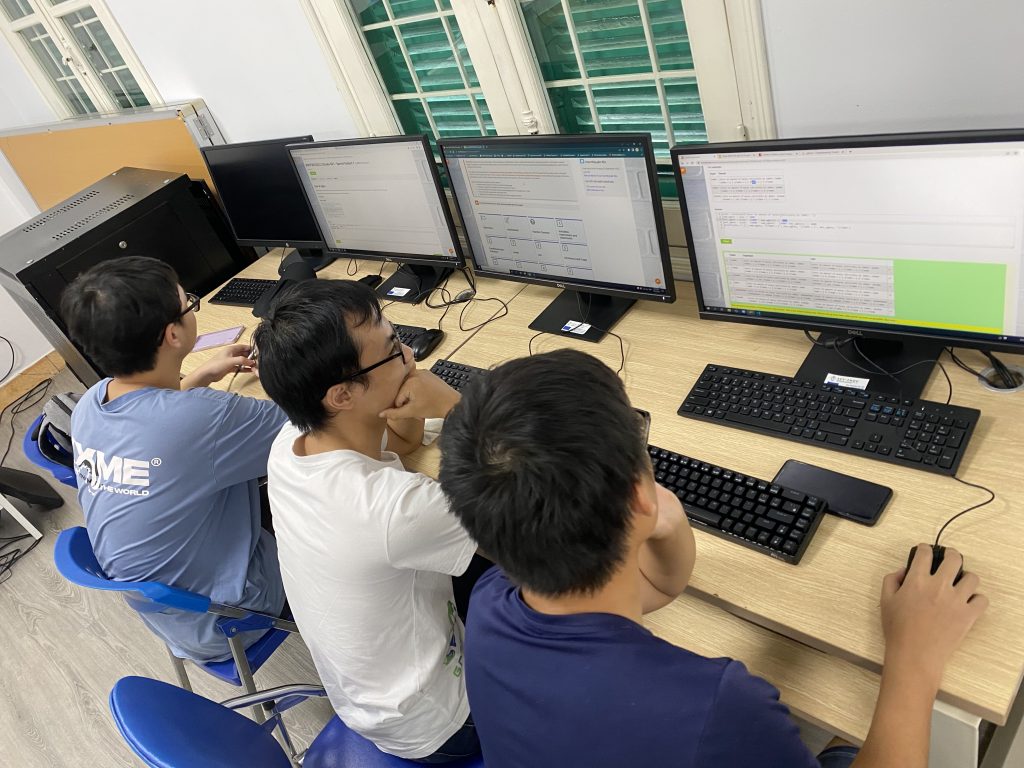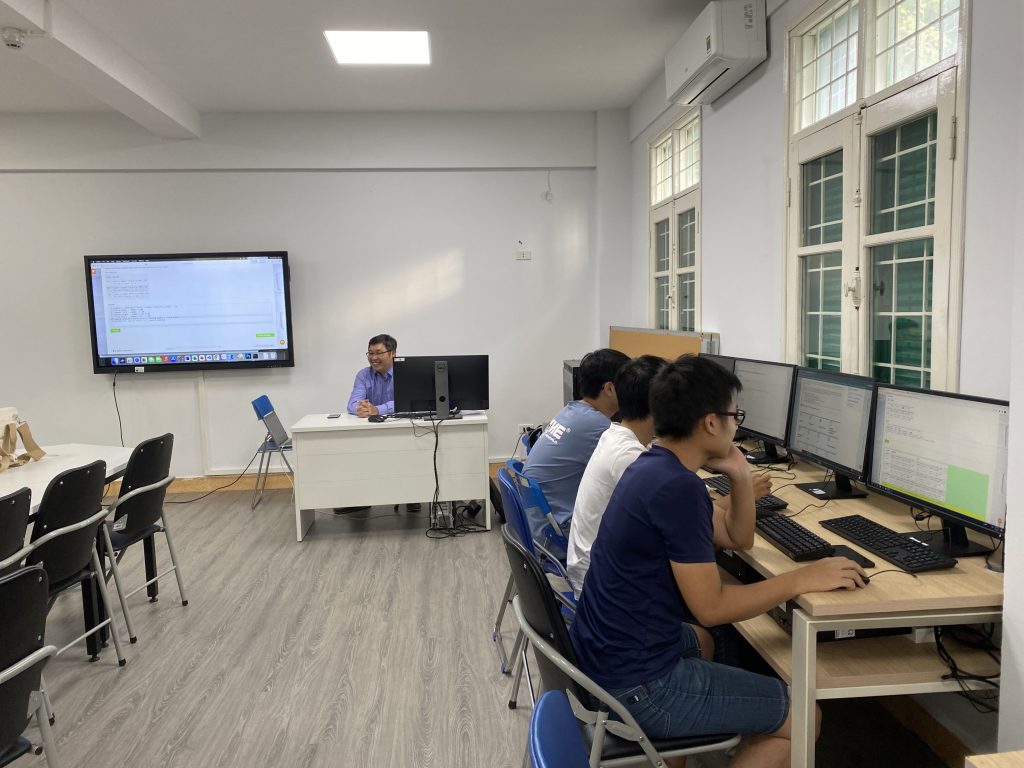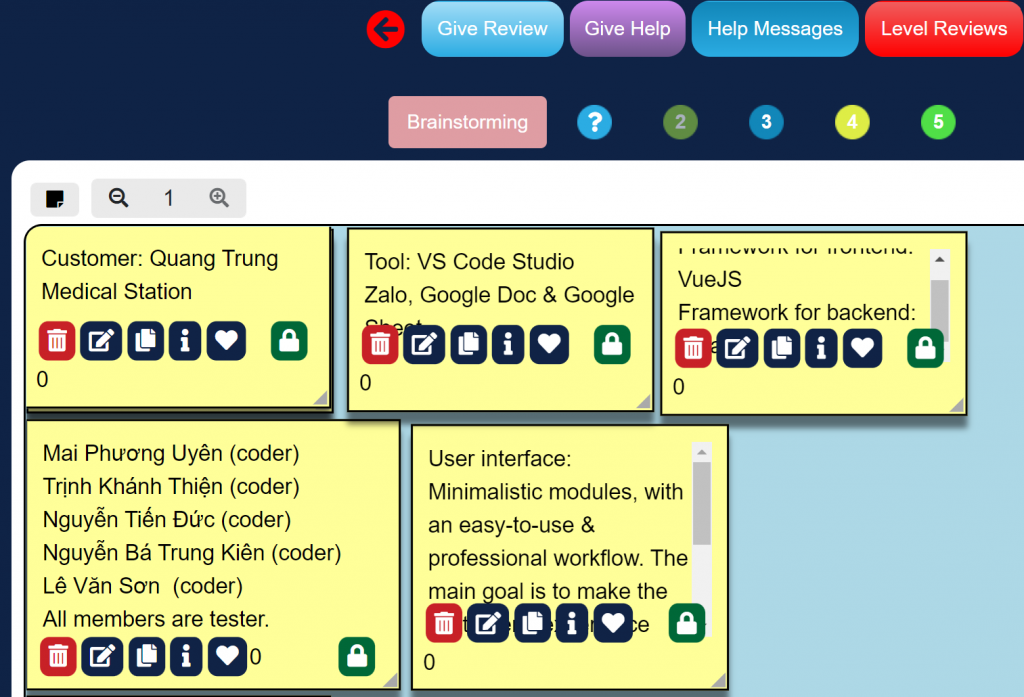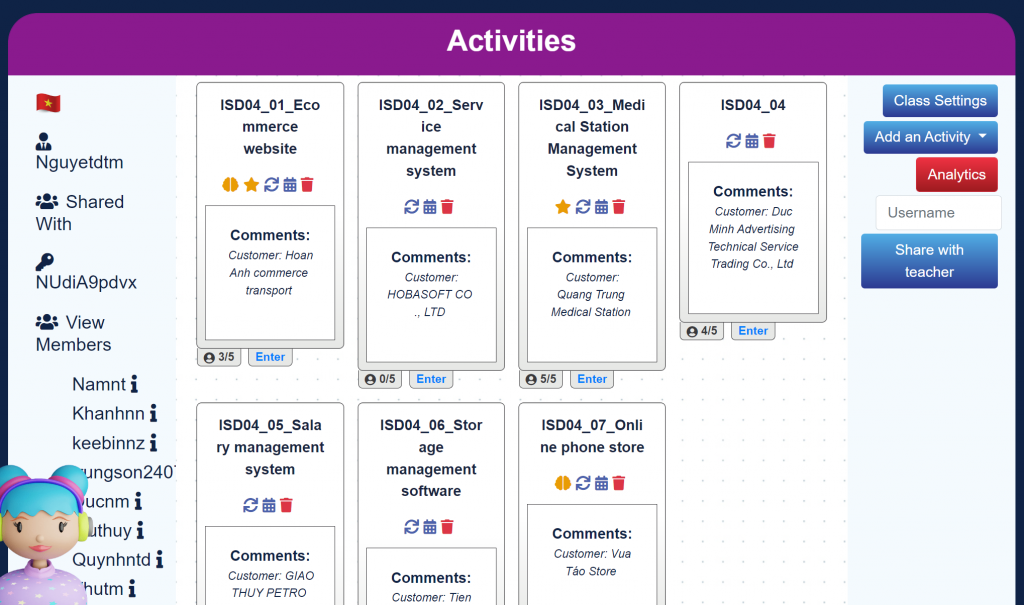
Description of the course
The course offers students an opportunity to work on semester long projects related to their curricula. Students are divided into groups. Each group develops a computerized application based on a specific topic under the guidance of a supervising educator. Examples of project themes include web design, human-computer interaction, multimedia design and more.
Description of the participants
This is an obligatory course that addresses undergraduate students from the Department of Information Systems, Faculty of Information Technology, Hanoi University. Approximately 30 students in the 2nd year of studies enrolled in the course in the fall semester of academic year 2022 – 2023.
Description of gamified design thinking activities
Course activities deploy the proposed gamified design thinking methodology. The key purpose of this activity is to address actual problems faced by real companies. Students were in charge of a development team that were hired to build a computer-based solution for the given company, namely the customers. Work is divided into the following steps.
Step 1. Problem discovery.
Students were encouraged to study the current situation in the company and discover opportunities for the introduction of a new system or the enhancement of existing practices that help the company gain a competitive advantage over their rivals.
Step 2. Empathy.
In order to correctly understand the customer’s needs and address real, as opposed to perceived, problems students were encouraged to practice empathy by applying user-centered approaches such as conducting research to understand past, present and future needs of the customer. Students were further encouraged to join the customer in their daily business or observe them working at their site.
Step 3. Problem definition.
After establishing a list of possible enhancements at the customer site as a result of empathy and problem discovery, students were directed to select a specific challenge to solve. They formulated the problem definition in the form of a “who, what, why” statement.
Step 4. Ideation.
Based on the results of the problem definition, students were encouraged to generate as many ideas as possible to help their customers address problems and gain competitive advantages. Activities related to ideation included listing all possible ideas, without limitations.
Step 5. Solution synthesis, prototyping and evaluation.
From the pool of solution ideas generated in the ideation step, students were encouraged to select one to convert into a prototype. Students selected the most viable idea by creating lists of pros and cons. Criteria considered for evaluating ideas include the potential to achieve competitive advantage, financial aspects, available human resources and time constraints. Students created a prototype on the selected idea and delivered it to the customer for validation. Based on customer feedback students refined their prototype solutions to best address the challenge in focus.




